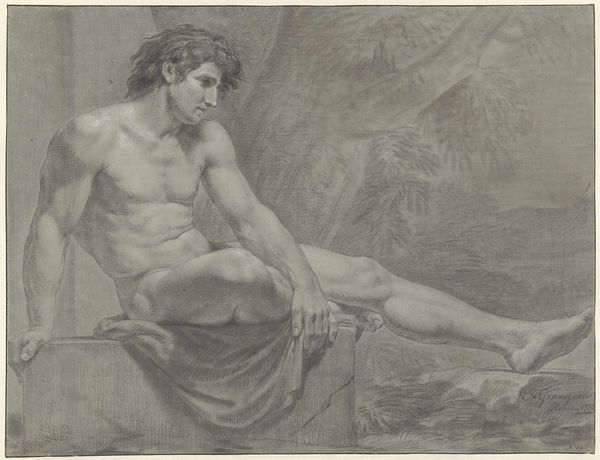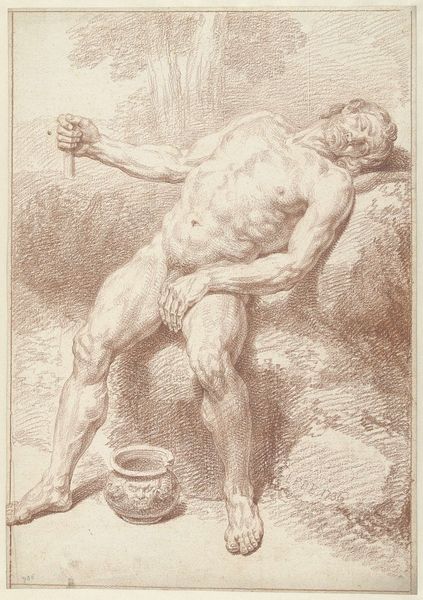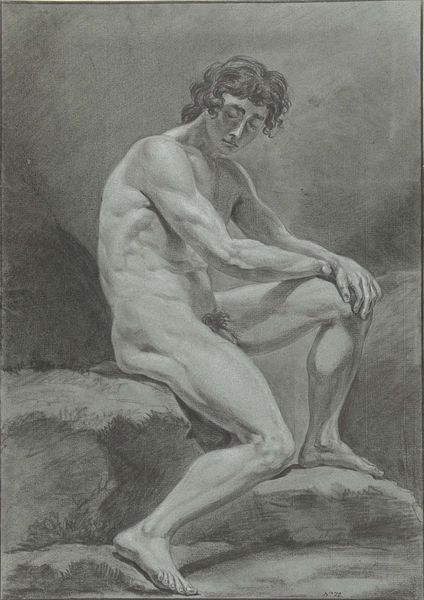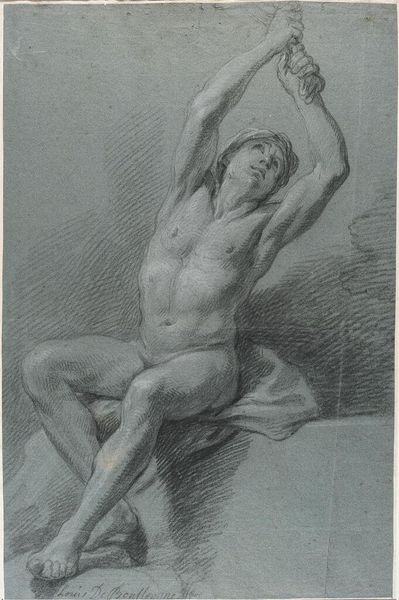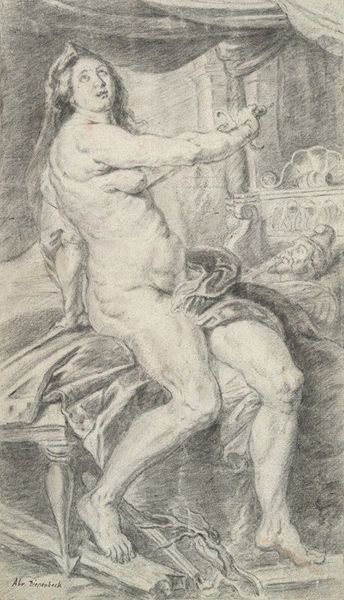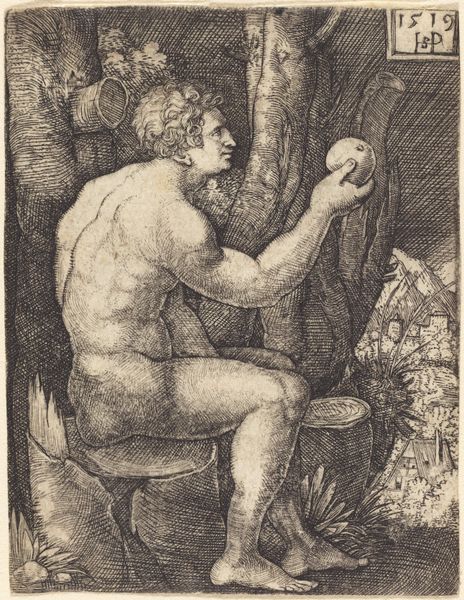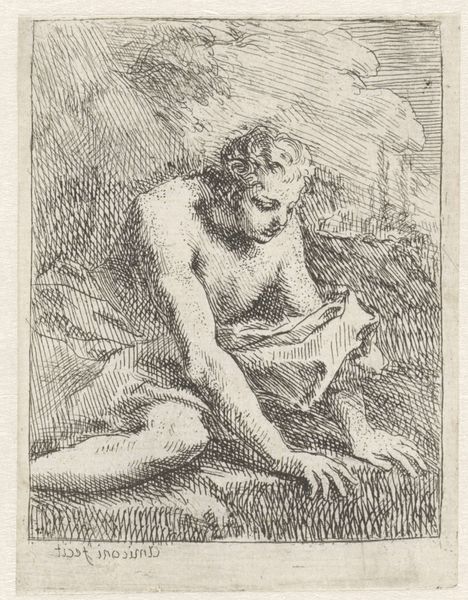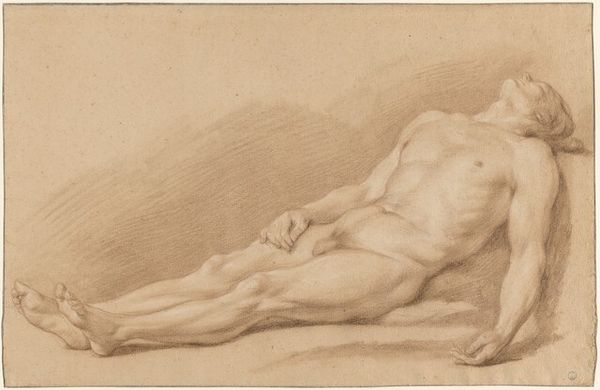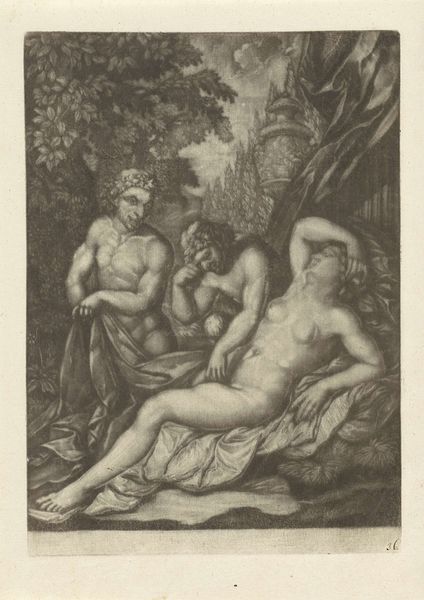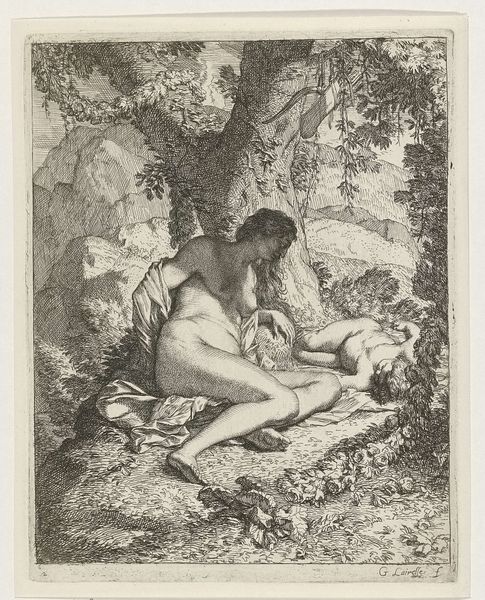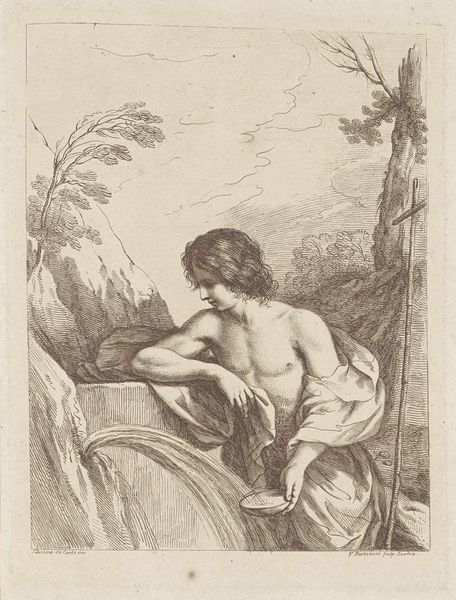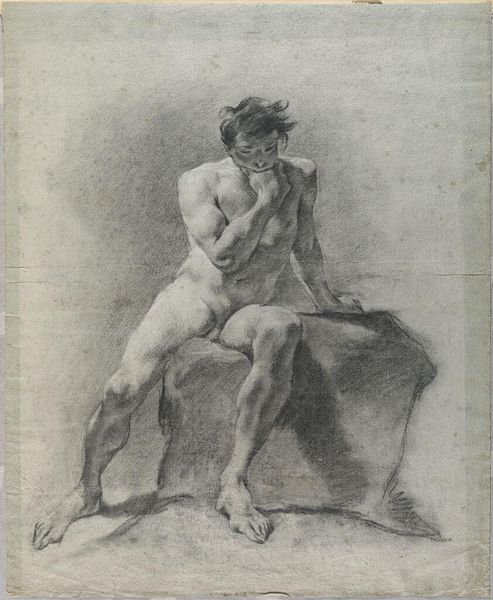
Copyright: Public Domain: Artvee
Hans Canon painted this Bacchus sometime in the 19th century, capturing the god of wine in a moment of inebriated repose. Note the thyrsus, entwined with ivy, clutched loosely in his hand, a symbol of Dionysian revelry. The grapes at his side further allude to his domain. But consider, how often do we see Bacchus depicted in such a state? From ancient Roman mosaics to Renaissance paintings, the imagery of Bacchus, or Dionysus, has oscillated between the ecstatic and the debauched. Think of Caravaggio’s youthful Bacchus, offering wine with a sensual gaze, a far cry from Canon’s languid figure. The motif of intoxication carries a potent psychological charge. It speaks to the human desire to escape, to lose oneself in pleasure. Canon's Bacchus isn't merely drunk, he embodies a collective yearning for liberation, for a release from the constraints of consciousness. The image of the reclining god is a symbol that resurfaces, shaped by the anxieties and desires of each new age.
Comments
No comments
Be the first to comment and join the conversation on the ultimate creative platform.
